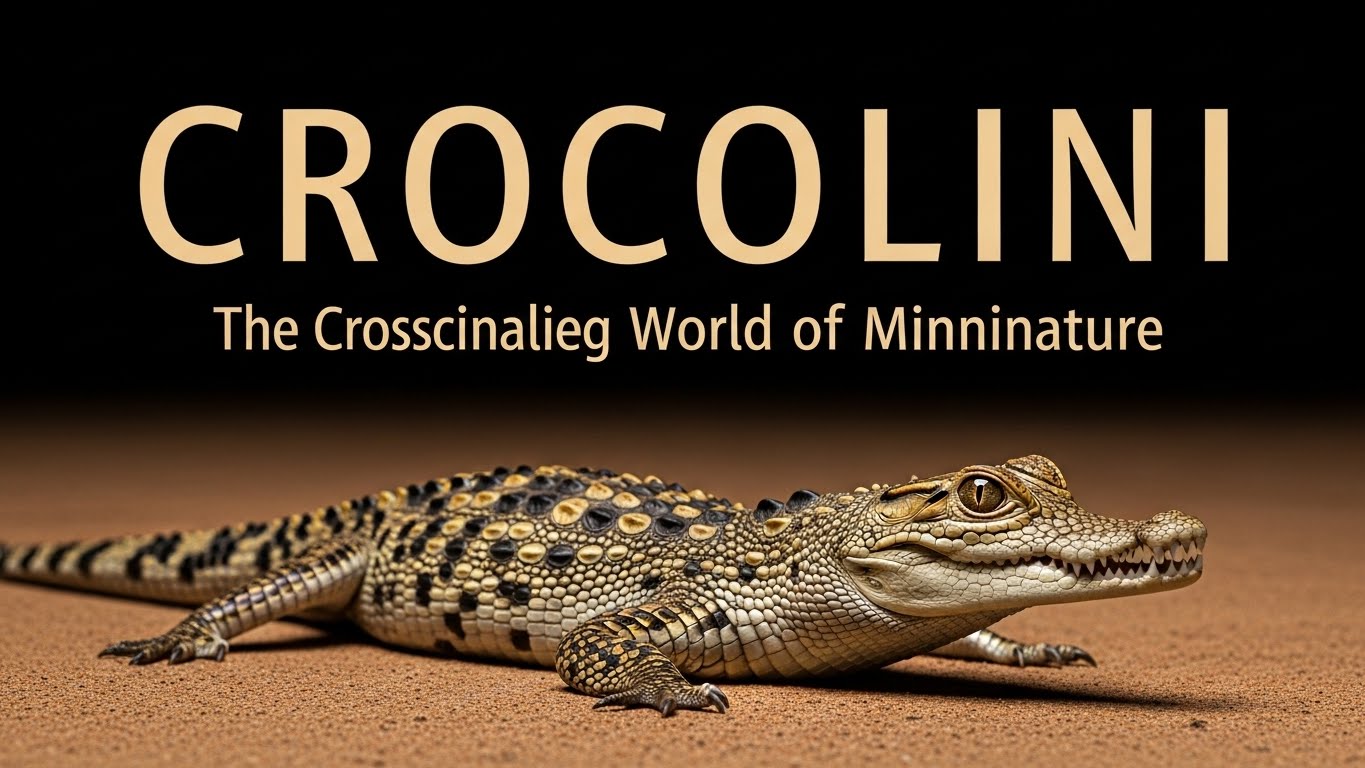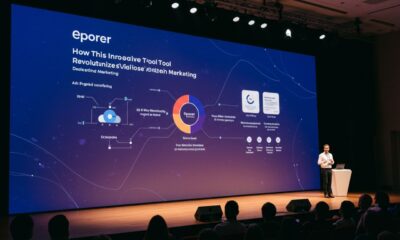Blog
Prizmatem: The Impact on Modern Graphic Design Trends

The world of graphic design is constantly evolving, with trends emerging and fading at a rapid pace. Among the latest innovations making waves in this creative landscape is Prizmatem. This cutting-edge technology not only redefines how designers approach their work but also influences the very essence of modern aesthetics. As we dive into what Prizmatem is all about, you’ll discover how it’s transforming visual communication and setting new standards for creativity in the digital age. Whether you’re a seasoned designer or someone curious about the industry, understanding Prizmatem will provide valuable insights into today’s graphic design trends.
What is Prizmatem?
Prizmatem is an innovative design framework that’s redefining the visual landscape of graphic design. It integrates intricate layering, vibrant color palettes, and geometric shapes to create stunning visuals that captivate audiences.
At its core, Prizmatem emphasizes a unique approach to aesthetics by blurring the lines between digital and physical art forms. This technique allows designers to transcend traditional boundaries.
With versatility at its heart, Prizmatem caters to various industries—from branding and advertising to web development. Designers can explore limitless possibilities while crafting engaging narratives through their work.
The method also encourages collaboration among creative minds, fostering a community where ideas flourish. As more designers embrace this style, it continues to evolve organically in response to cultural shifts and technological advancements.
How Prizmatem is Changing the Graphic Design Game
Prizmatem is revolutionizing graphic design by introducing a fresh perspective on color and form. Its unique approach allows designers to create stunning visuals that captivate audiences.
With Prizmatem, professionals can blend various styles seamlessly. This fluidity encourages experimentation, leading to innovative designs that stand out in crowded markets.
Moreover, the platform streamlines workflows with its intuitive interface and powerful tools. Designers no longer waste time struggling with complicated software; they can focus on creativity instead.
Collaborative features also foster teamwork among creatives. Remote teams can work together efficiently, sharing ideas in real-time while leveraging Prizmatem’s cutting-edge capabilities.
As trends shift toward minimalism and bold aesthetics, Prizmatem meets these demands head-on. It empowers designers to explore new dimensions of visual storytelling without limitations. The game has indeed changed—thanks to this dynamic tool shaping the future of design.
The Influence of Technology on Prizmatem’s Success
Technology plays a pivotal role in the rise of Prizmatem. Its innovative design tools have revolutionized how graphic designers approach their craft.
The integration of artificial intelligence has streamlined workflows. Designers can now generate unique patterns and color palettes with just a few clicks. This efficiency allows for greater creativity and experimentation.
Additionally, advancements in software compatibility mean that Prizmatem works seamlessly across various platforms. Whether you’re using Adobe Creative Suite or other design programs, incorporating Prizmatem is effortless.
Social media also amplifies its reach. Designers showcase their work on platforms like Instagram and Behance, creating buzz around this modern trend.
With online tutorials and resources available, more creators are adopting Prizmatem techniques into their projects. This growing community fosters collaboration and inspires fresh ideas within the graphic design world.
Case Studies: Brands That Have Used Prizmatem in their Designs
Several prominent brands have embraced Prizmatem, seamlessly integrating it into their visual identity.
One notable example is a major tech company that redefined its branding using vibrant, multifaceted colors. This approach not only caught the eye but also conveyed innovation and dynamism.
Another brand in the fashion industry utilized Prizmatem to elevate product packaging. The striking visuals created an immediate connection with consumers, making products stand out on crowded shelves.
Even a popular beverage brand tapped into Prizmatem for its advertising campaigns. Bold graphics featuring geometric patterns drew attention and sparked conversations online.
These case studies illustrate how versatile and impactful Prizmatem can be across various sectors. The creative possibilities are endless, inspiring brands to think outside traditional design boundaries while resonating deeply with their audiences.
The Future of Graphic Design with Prizmatem
The future of graphic design is taking an exciting turn with Prizmatem at the forefront. As designers increasingly embrace this innovative approach, fresh styles and techniques are emerging. The blend of vibrant colors and dynamic shapes creates a visual language that captivates audiences.
New tools powered by AI and machine learning will enhance Prizmatem’s capabilities. Designers can expect more intuitive software that streamlines the creative process while allowing for endless customization. This fusion of technology and artistry fosters unprecedented levels of creativity.
Furthermore, as brands recognize the power of emotional engagement through visuals, Prizmatem will play a crucial role in shaping their identity. It allows companies to tell compelling stories through striking imagery.
As sustainability becomes paramount, eco-friendly materials aligning with Prizmatem principles may soon dominate the market. This shift could redefine how designs are not only created but also experienced by consumers worldwide.
Criticisms and Challenges Faced by Prizmatem
Prizmatem has not been without its critics. Some designers argue that the tool can lead to homogenized aesthetics across projects. When everyone uses the same software, unique styles may fade away.
There’s also a concern about accessibility. Not all designers have the budget or resources to adopt Prizmatem, potentially widening the gap between established brands and newcomers. This creates an uneven playing field in graphic design.
Moreover, reliance on technology raises questions about creative authenticity. Are designs truly innovative if they stem from algorithms? The debate continues as creatives navigate their relationship with automated tools.
Adapting to frequent updates can be challenging for teams already juggling multiple responsibilities. Staying current requires time and effort that some might lack amidst tight deadlines and project demands.
The Ongoing Evolution of Graphic Design with Prizmatem
Prizmatem is reshaping the landscape of graphic design. Its dynamic approach allows designers to experiment with color and form like never before.
As artists embrace Prizmatem, we see a blend of traditional techniques and modern aesthetics. The software’s tools encourage creativity while maintaining precision in execution.
Designers are now able to create visuals that tell stories through layers and gradients. This evolution fosters a sense of depth that captivates audiences.
Moreover, collaboration has become easier. Teams can share their designs in real-time, streamlining workflows across diverse industries.
The integration of AI within Prizmatem further enhances this evolution. Intelligent features suggest improvements or alternatives, pushing boundaries even further.
Graphic design is entering an era where innovation meets inspiration, driven by the capabilities offered. This ongoing transformation promises exciting developments for both creators and consumers alike.
Blog
Crocolini: The Fascinating World of Miniature Crocodiles

Welcome to the captivating world of Crocolini, where miniature crocodiles take center stage! These tiny reptiles are more than just adorable; they offer a glimpse into the incredible diversity of our planet’s wildlife. Originating from unique habitats and exhibiting fascinating behaviors, have captured the hearts and imaginations of many. Whether you’re an animal enthusiast or simply curious about these little creatures, prepare to dive deep into their enchanting lives. Let’s explore what makes Crocolini so special and why they deserve our attention!
What is Crocolini?
Crocolini are a captivating species of miniature crocodiles, distinguished by their diminutive size and playful demeanor. These tiny reptiles typically measure between one to two feet in length, making them far more approachable than their larger relatives.
Their unique charm lies not just in their size but also in their striking appearance. With vibrant green scales and sparkling eyes, crocolini possess an almost whimsical quality that draws attention from both researchers and enthusiasts alike.
Unlike traditional crocodiles, which can evoke fear due to their size and predatory nature, crocolini are known for their gentle disposition. They often inhabit freshwater ecosystems such as swamps or rivers where they thrive among lush vegetation.
The allure of crocolini extends beyond mere aesthetics; they play a vital role in maintaining the balance of their habitats. Their behaviors contribute significantly to environmental health while sparking curiosity across various communities.
History of Crocolini: How did these miniature crocodiles develop?
The history of crocolini is as intriguing as the creatures themselves. These miniature crocodiles are believed to have evolved from larger ancestral species millions of years ago.
As environmental changes unfolded, some populations adapted to smaller sizes. This allowed them to thrive in diverse habitats, particularly in freshwater and brackish ecosystems.
Their unique evolutionary path has led to distinct physical traits. Shorter snouts and smaller limbs help crocolini maneuver through dense vegetation with ease.
Fossil records suggest that their ancestors roamed alongside dinosaurs. The adaptability displayed by modern-day crocolini hints at a long lineage marked by resilience and survival strategies.
Over time, they became a fascinating example of how nature can shape life forms based on available resources and environmental pressures. Their development reflects the dynamic relationship between organisms and their habitats throughout history.
Physical Characteristics of Crocolini: Size, appearance, and adaptations
Crocolini are truly remarkable creatures. These miniature crocodiles typically measure between 1 and 3 feet in length, making them much smaller than their larger relatives.
Their bodies are sleek and streamlined, perfectly adapted for agile movement in water. The skin is usually a rich green or brown color, providing excellent camouflage among the reeds and swamps they inhabit.
What sets Crocolini apart is their distinctively elongated snouts lined with sharp teeth. This adaptation allows them to catch small fish and insects quickly.
Despite their size, these reptiles exhibit powerful muscles that help them swim efficiently. Their strong tails serve both as propulsion underwater and balance on land.
Additionally, Crocolini have unique claw shapes that assist in climbing over rocky surfaces or navigating dense vegetation. Each of these features plays a crucial role in their survival within varied environments.
Habitat and Diet of Crocolini: Where do they live and what do they eat?
Crocolini thrive in tropical and subtropical regions, often found near freshwater sources like rivers, lakes, and marshes. Their preference for warm climates supports their active lifestyle.
These miniature crocodiles are skilled at adapting to various environments. They can be spotted basking on sunlit banks or lurking among dense vegetation. This camouflage helps them evade predators while stalking prey.
When it comes to diet, Crocolini are opportunistic hunters. They primarily feast on small fish, insects, and crustaceans. Their powerful jaws allow them to catch slippery snacks with ease.
Occasionally, they will scavenge carrion if the chance arises. This diverse diet ensures that Crocolini maintain good health and thrive in their habitats despite varying food availability throughout the seasons.
Behavior and Social Hierarchy of Crocolini
Crocolini exhibit intriguing behavior patterns that set them apart from their larger relatives. These miniature crocodiles have a complex social structure, often forming small groups known as pods. Within these pods, they establish hierarchies based on size and age.
Dominant individuals assert control over prime basking spots and feeding areas. This hierarchy is fluid, allowing younger or smaller Crocolini to climb the ranks through displays of strength or skill.
Communication plays a vital role in their interactions. They use body language, vocalizations, and even subtle movements in the water to convey messages among themselves. When threatened, Crocolini can be surprisingly agile swimmers, employing evasive maneuvers both above and below the surface.
Their playful antics are also worth noting; young Crocolini engage in mock fighting and chasing games that help develop essential survival skills while reinforcing social bonds within the group.
Conservation Efforts for Crocolini: Threats and protection measures
Crocolini face numerous threats in their natural habitats. Habitat destruction, primarily due to urbanization and agriculture, poses a significant risk. As wetlands are drained or converted into farmland, these miniature crocodiles lose essential breeding and foraging areas.
Pollution also plays a crucial role in diminishing their populations. Contaminants from agricultural runoff can devastate local ecosystems. This results in declining food sources for Crocolini.
Conservationists are stepping up efforts to protect these unique reptiles. Initiatives include habitat restoration projects aimed at re-establishing wetland ecosystems. Collaboration with local communities is vital for sustainable practices that support both humans and wildlife.
Education programs raise awareness about the importance of preserving Crocolini’s habitats. By fostering appreciation among locals, conservationists aim to reduce human-wildlife conflict and promote coexistence.
Legal protections are being implemented as well, regulating hunting and trade within regions where Crocolini reside. These measures help ensure future generations can enjoy the fascinating world of miniature crocodiles.
Conclusion
The world of crocolini is both intriguing and captivating. These miniature crocodiles have carved out a niche that blends charm with the raw essence of their larger relatives. From their unique adaptations to thrive in diverse habitats, to their complex behaviors and social structures, crocolini offer a glimpse into the wonders of nature.
As threats loom over many species due to habitat destruction and climate change, understanding crocolini becomes all the more vital. Conservation efforts are essential not just for these petite reptiles but for maintaining biodiversity as a whole.
Exploring the life of crocolini opens doors to appreciation and awareness about our planet’s delicate ecosystems. As we strive to protect these remarkable creatures, we also safeguard the rich tapestry of life they represent. Embracing our role in conservation can lead us toward a future where cricolini continue to thrive alongside us on this beautiful Earth.
Blog
Literoticatags: Your Ultimate Guide to Finding the Perfect Story

Welcome to the enticing world of Literotica, where your fantasies come alive through captivating stories. If you’re seeking a thrilling escape that ignites your imagination and tantalizes your senses, you’ve just stumbled upon the right place. With countless narratives waiting to be explored, it can sometimes feel overwhelming to find exactly what resonates with you. That’s where Literoticatags comes into play—a tool designed precisely for those on a quest for their next great read. Get ready to dive deep into this ultimate guide and uncover how literoticatags can lead you straight to the perfect story!
What is Literoticatags?
Literoticatags is a user-driven platform that enhances your journey through the world of erotic literature. It acts as a search engine specifically for stories on Literotica, allowing readers to discover content tailored to their interests.
By utilizing tags, users can sift through thousands of narratives based on themes, kinks, or specific scenarios. This feature allows for a more personalized reading experience, ensuring you find what truly excites you.
Whether you’re into romance, BDSM, or fantasy adventures that push boundaries, Literoticatags has it all neatly categorized. It’s not just about finding any story; it’s about connecting with narratives that resonate deeply and spark imagination.
With this tool at your fingertips, navigating the extensive library becomes effortless and enjoyable. Dive in and explore—your next favorite story awaits!
How to Use Literoticatags
Using Literoticatags is straightforward and user-friendly. First, visit the Literotica website and navigate to the tags section. Here, you’ll find a comprehensive list of genres and themes.
Clicking on any tag will lead you to stories that match your interests. Whether you’re looking for romance, BDSM, or anything in between, there’s something available for every taste.
Don’t forget to make use of filters to narrow down your search even further. You can sort by ratings or the most recently added stories.
As you explore different tags, keep an eye out for user comments and reviews. These insights can provide guidance on which tales might resonate with you best.
Consider creating an account if you’re a frequent reader. This allows you to save your favorite tags and stories for easy access later on.
The Different Categories and Genres Available
Literoticatags opens the door to a vast universe of categories and genres. You can easily browse through an array of themes that cater to diverse tastes.
From romance to fantasy, there’s something for everyone. If you crave intense emotional connections, dive into passionate romances that explore love’s intricacies.
For those with adventurous spirits, the fantasy genre offers escapades filled with mythical creatures and enchanting worlds. Here, imagination knows no bounds.
BDSM enthusiasts will find numerous stories dedicated to their interests. These tales delve into power dynamics and explore intriguing relationships.
You’ll also discover niche categories like historical fiction or even futuristic sci-fi settings. Each story invites readers on a unique journey tailored to specific preferences.
The beauty lies in the variety; every reader can find what resonates most with them amidst these captivating genres.
Top Rated Stories and Why They Stand Out
When diving into the world of literoticatags, certain stories consistently capture attention and spark interest. Top-rated tales often blend captivating narratives with well-crafted characters, drawing readers in from the first sentence.
One standout feature is emotional depth. Readers connect not just with the act but also with the feelings behind it. This combination makes a story memorable and impactful.
Another crucial element is unique premises. Stories that explore unconventional themes or settings tend to rise above others. They challenge norms and keep readers engaged, always eager to uncover what happens next.
Quality writing also plays a significant role. Well-edited prose enhances immersion, allowing readers to escape into another world seamlessly.
Reader feedback shapes these rankings too. Reviews highlight what resonates most—be it humor, tension, or unexpected twists—ensuring only the best stories shine through on literoticatags.
Tips for Finding the Perfect Story for You
Finding the perfect story on Literoticatags can be an exciting journey. Start by exploring different tags that resonate with your interests. Tags help narrow down themes and genres, making it easier for you to discover what captivates you.
Don’t shy away from browsing user ratings and reviews. They provide valuable insights into what makes certain stories stand out. You might stumble upon hidden gems or popular favorites through community feedback.
Consider varying your search criteria occasionally. If you typically enjoy one genre, try dipping your toes into something new. This exploration may lead to unexpected delights.
Pay attention to authors whose styles appeal to you. Following their work can streamline future reading choices and enhance your overall experience on the platform. Embrace the adventure and let curiosity guide you!
The Benefits of Reading Literotica Stories
Reading Literotica stories offers a unique escape into different worlds. These tales ignite the imagination, allowing readers to explore fantasies they may not encounter in everyday life.
The diversity of characters and scenarios can be incredibly liberating. You can find narratives that resonate with your desires or challenge your perspectives on intimacy and relationships.
Literotica also serves as an excellent avenue for self-discovery. Engaging with various themes helps clarify personal preferences and boundaries in a safe environment.
Additionally, these stories foster community among readers who share similar interests. Discussions often spark new ideas and insights, creating a sense of belonging.
Moreover, indulging in reading is simply enjoyable! The thrill of anticipation while turning each page keeps you engaged, making it a delightful pastime that many cherish.
Conclusion
Literoticatags is more than just a tool; it’s your gateway to an engaging world of erotic storytelling. Whether you’re looking for something specific or wanting to explore new fantasies, this platform offers endless possibilities. The various categories and genres help streamline your search, making it easier to find exactly what resonates with you.
By diving into the top-rated stories, you can discover why certain narratives capture the audience’s attention and keep readers coming back for more. Utilizing tips on how to navigate Literoticatags will enhance your experience further, ensuring that each reading session is fulfilling.
Reading Literotica stories not only provides entertainment but also serves as a medium for exploring desires in a safe space. With so many options at your fingertips, there’s always something new waiting to be discovered.
Blog
MyWape: Your Ultimate Guide to Innovative Vaping Solutions

Vaping has transformed from a niche pastime to a mainstream lifestyle choice. Whether you’re looking to kick the smoking habit or simply explore new flavors and experiences, vaping offers something for everyone. With an ever-growing range of devices and e-liquids on the market, it can be overwhelming to find what suits your needs best. Enter MyWape—your go-to brand for innovative vaping solutions that elevate your experience and keep you coming back for more. Join us as we dive into everything you need to know about MyWape and discover how this dynamic brand is reshaping the future of vaping.
What is MyWape?
MyWape is an innovative brand at the forefront of vaping solutions. It focuses on providing users with a seamless and enjoyable experience through cutting-edge technology.
What sets MyWape apart from other brands is its commitment to quality and customer satisfaction. Each product is carefully designed, ensuring that every puff delivers consistent flavor and vapor production.
The range includes various devices tailored to meet different user preferences, whether you’re new to vaping or a seasoned enthusiast. From sleek pods to powerful mods, there’s something for everyone.
MyWape also prioritizes safety by adhering to strict industry regulations. This dedication fosters trust among its community of users who seek not just enjoyment but peace of mind while they vape.
The Evolution of Vaping Technology
Vaping technology has come a long way since its inception. Initially, devices were bulky and inefficient. Early e-cigarettes resembled traditional cigarettes, providing limited options for users.
As demand grew, manufacturers began innovating. The introduction of vape pens marked a significant shift. These compact devices offered better battery life and flavor production.
Next came the box mods, which revolutionized customization in vaping. Users could adjust wattage and temperature settings to tailor their experience. This flexibility attracted more enthusiasts into the community.
Pod systems followed closely behind, appealing to those seeking simplicity without sacrificing performance. Their user-friendly design made them popular among newcomers.
Through all these advancements, safety features have become paramount too. Enhanced airflow controls and leak-proof designs have emerged to ensure a seamless experience for vapers everywhere.
Advancements in Vape Devices: Pods, Mods, and Tanks
The vaping landscape has evolved dramatically over the years. Today, you can choose from a variety of devices that cater to different preferences and experiences.
Pods have become increasingly popular due to their simplicity and portability. These compact systems offer convenience for on-the-go users while delivering satisfying flavors. They’re perfect for those who prefer a low-maintenance option.
On the other hand, mods provide customization and power. Enthusiasts appreciate the ability to adjust settings like wattage and temperature, allowing them to tailor each puff. This versatility attracts experienced vapers seeking a personalized experience.
Then there are tanks, designed for maximum e-liquid capacity and enhanced flavor production. These devices allow users to build coils according to their liking, resulting in clouds of vapor that pack a punch.
Each type of device serves its purpose well, catering to various tastes in the ever-evolving world of vaping technology.
Understanding E-Liquid and Nicotine Levels
E-liquid is the lifeblood of vaping, providing flavor and satisfaction in every puff. Composed mainly of vegetable glycerin (VG) and propylene glycol (PG), these liquids can produce thick vapor clouds or flavorful hits, depending on the mix.
Nicotine levels in e-liquids vary widely, catering to different preferences. They typically range from zero to 24 milligrams per milliliter. Understanding this scale is essential for users seeking a tailored experience.
Lower nicotine concentrations offer a smoother inhale and are often favored by those transitioning from traditional cigarettes. Conversely, higher levels deliver a stronger throat hit for seasoned vapers who need more intensity.
Flavor plays an equally important role in choosing e-liquids; options include everything from classic tobacco to fruity blends. Experimentation can lead to discovering your ideal combination that enhances every session with MyWape products.
Innovative Features of MyWape Products
MyWape products stand out because of their user-friendly design and advanced technology. Each device is crafted with the vaper in mind, ensuring an effortless experience from start to finish.
One notable feature is the customizable wattage settings. This allows users to tailor their vaping experience according to personal preferences. Whether you like a mild puff or a robust hit, MyWape has you covered.
Another exciting innovation is the quick-charging capability. Vapers no longer have to wait hours for their devices to recharge. A short break can be enough for a full battery—perfect for those on-the-go moments.
Additionally, MyWape integrates smart technology that tracks usage patterns and suggests optimal settings based on individual habits. This personalized approach enhances satisfaction and enjoyment with every draw.
The sleek designs are not just aesthetic; they also promote portability without sacrificing performance—a win-win for modern vapers everywhere!
How MyWape is Revolutionizing the Vaping Experience
MyWape is changing the way we think about vaping. Their commitment to user experience shines through every product they design.
One standout feature is their intuitive interface. It makes adjusting settings effortless, allowing users to customize their experience with just a few taps.
The sleek and portable designs make MyWape devices perfect for on-the-go lifestyles. You can enjoy your favorite flavors without sacrificing style or convenience.
Moreover, MyWape places an emphasis on flavor integrity. Each device is engineered to deliver rich tastes that enhance the overall vaping pleasure.
Their dedication to safety cannot be overlooked either. Advanced technology ensures each puff is not only satisfying but also safe for users.
With constant innovation and customer feedback driving development, MyWape continuously pushes boundaries in the vaping industry, setting new standards along the way.
Safety and Regulations in the Vaping Industry
The vaping industry is rapidly evolving, and with that evolution comes an increasing need for safety and regulation. Governments around the world are beginning to implement guidelines to protect consumers.
Quality control is crucial. Many countries now require manufacturers to adhere to strict testing protocols. This ensures products meet safety standards before reaching the market.
Labeling plays a significant role as well. Clear information on nicotine levels and ingredients helps users make informed choices. Transparency fosters trust between brands like MyWape and their customers.
Age restrictions are becoming standard practice too, preventing underage access to vaping products. Retailers often enforce these rules strictly, contributing to a responsible marketplace.
Consumer awareness is vital in navigating this landscape of regulations. Staying updated helps individuals remain informed about safe practices while enjoying their vaping experience responsibly.
Why Choose MyWape for Your Vaping Needs?
When it comes to vaping, MyWape stands out for many reasons. First and foremost, the brand prioritizes user experience. Their devices are designed with modern technology that ensures smooth operation and reliability.
Quality is another key factor. MyWape products undergo rigorous testing to meet high standards. This commitment to excellence means you can trust every puff.
Variety also plays a significant role in their appeal. From sleek pods to powerful mods, there’s something for everyone’s preference and style.
Additionally, customer support is top-notch at MyWape. They provide resources and assistance whenever needed, making your vaping journey seamless.
Their innovative features set them apart from competitors. Whether it’s customizable settings or unique coil designs, MyWape continues to push boundaries in the vaping world.
Conclusion
When it comes to the world of vaping, MyWape stands out as a leader in innovation and design. With advancements in technology, user-friendly devices, and a commitment to safety, MyWape caters to both seasoned vapers and those new to the experience. The brand emphasizes quality through its e-liquids and offers customizable options that fit diverse preferences.
The evolution of vape devices has transformed how users enjoy their favorite flavors while maintaining control over nicotine levels. As trends continue to shift within this industry, MyWape remains at the forefront by constantly evolving its product line based on customer feedback and technological improvements.
Choosing MyWape means investing in not just a product but also an enhanced vaping experience. Their innovative features ensure satisfaction with every puff while prioritizing safety for all users. Whether you are looking for portability or advanced customization options, MyWape provides solutions tailored to your unique needs.
-

 Health2 weeks ago
Health2 weeks agogel ooru: Incorporate into Your Daily Routine for Radiant Skin
-

 Digital Marketing2 weeks ago
Digital Marketing2 weeks agoEporer: How This Innovative Tool Revolutionizes Digital Marketing
-

 Technology3 months ago
Technology3 months agointernetchocks: The Impact of Online Communication and Connectivity
-

 Blog2 months ago
Blog2 months agoهنتاوي com: Changing the Online Entertainment Landscape
-

 Technology2 months ago
Technology2 months agoi̇ns: Strategies for Leveraging Information Networks Effectively
-

 Travel2 months ago
Travel2 months agoPertadad: Should Be on Your Travel Bucket List This Year
-

 Business3 months ago
Business3 months agoRowdy Oxford Lawsuit: It Means for Local Businesses and Community
-

 Technology3 months ago
Technology3 months agoSpaietacle: Bridging Cultures Through Innovative Visual Experiences
